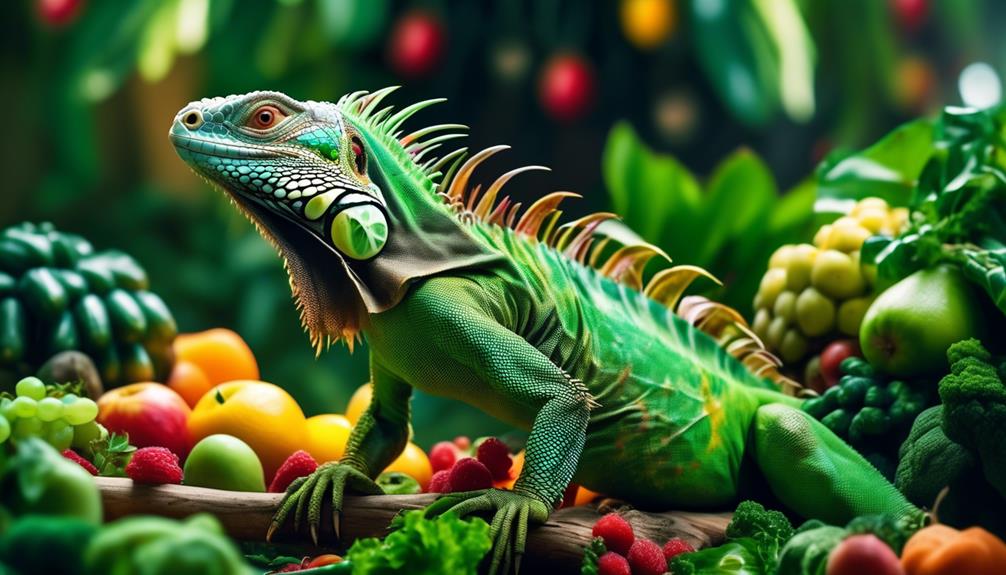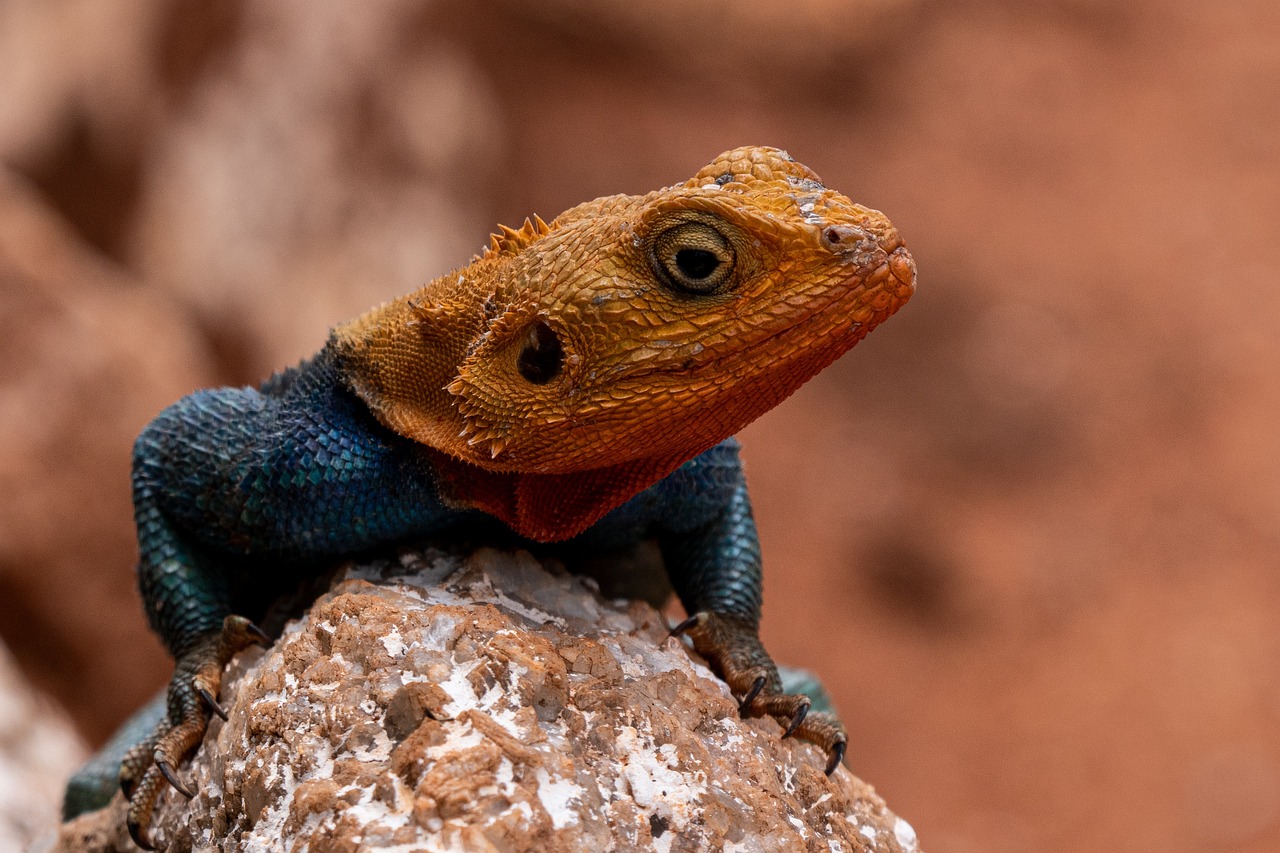You may be asking yourself, why would anyone want to know how long a leopard gecko can go without eating? After all, it’s important to keep your pet healthy and well-fed. However, it is essential to understand the basics of leopard gecko nutrition in order to provide them with the best care. In this article, we will explore the reasons behind fasting, the dangers of going too long without eating, and tips for ensuring proper nutrition. We’ll also answer that burning question: How long can a leopard gecko go without eating?
Key Takeaways
- Leopard geckos can survive for weeks without food, with adults being able to go up to 14 days without eating.
- Young geckos should not go more than two days without food.
- Fasting can have various benefits for leopard geckos, including promoting successful breeding habits, improving temperature needs, enhancing the immune system response, and allowing geckos to conserve energy and burn stored fat.
- Going too long without eating can lead to malnutrition, stress, stunted growth, organ failure, and insufficient nutrient intake, emphasizing the importance of proper nutrition and monitoring diet.
Overview of Leopard Geckos
You’ll be amazed by the beautiful colors and patterns that make up a leopard gecko! These lizards are native to many parts of the world, including Pakistan, Afghanistan, and Iran. As reptiles, they need heat regulation in order to thrive – something which can easily be achieved through the use of an under-tank heating pad. Leopard geckos also require very low levels of stress in order to stay healthy and active, so it’s important to minimize handling them if possible. A leopard gecko’s diet consists mostly of live food such as crickets or mealworms; however, they may also eat some frozen/thawed prey items like pinky mice from time to time. All of these factors help contribute to maintaining their health and well being. Encouraging natural behaviors like digging and climbing will also give your pet lots of exercise – something that is essential for any lizard species! With proper care, a leopard gecko can live for more than 20 years in captivity. Knowing this information is key when considering how long a leopard gecko can go without eating before serious health problems arise. Moving on from this overview then, let’s take a closer look at how long a leopard gecko can survive without food.
How Long Can a Leopard Gecko Go Without Eating?
It’s important to know how much time a beloved pet can go without nourishment. When it comes to leopard geckos, these lizards do not need to eat every day and can survive for weeks without food. However, when looking at the long-term health of your pet, it is important to set up a meal plan that meets their dietary needs and ensures that they get enough nutrition over time. Depending on the age, size, and activity level of your gecko, an adult may be able to go up to 14 days without eating before needing sustenance again. This fast should only be done occasionally as part of overall meal planning and should be monitored closely; if the gecko appears lethargic or weak during this period it should be fed immediately. Additionally, young geckos should never be allowed to go more than two days without food as their growing bodies require more nutrients than adults do. In order for a leopard gecko to stay healthy in the long-term, setting up a well-balanced diet with appropriate portion sizes is essential. Meal planning will help ensure that your pet gets all the necessary nutrition while also allowing occasional fasting periods that promote good health.
Reasons for Fasting
Fasting can be a great way to promote overall health, and leopard geckos are no exception! While there are some risks associated with prolonged fasting, it can have benefits such as:
- Increasing the chances of successful breeding habits
- Improving temperature needs
- Enhancing the immune system response
For leopard geckos, fasting helps by allowing them to conserve energy for times when food is scarce in their natural environment. When they go without food for extended periods, they force their bodies to burn stored fat in order to survive. This process aids in shedding excess weight and reduces stress on their organs. Additionally, periodic fasting can help leopard geckos maintain a healthy digestive system by giving their intestines and livers time to rest from processing food.
However, it’s important that owners not attempt an extreme fast with their pet gecko as this could result in serious health issues or even death due to malnourishment and dehydration. In general, experts recommend that owners stick with short-term fasts while monitoring their pet’s behavior closely for signs of distress or illness during the process. With careful consideration of the potential risks involved, fasting can be a beneficial part of caring for your pet leopard gecko when done correctly and responsibly. Moving forward then it’s important to understand the dangers of going too long without eating…
Dangers of Going Too Long Without Eating
| Going for too long without eating can be dangerous for leopard geckos, so it’s important to understand the risks involved. Fasting can cause a great deal of physical and mental stress in leopard geckos, leading to malnutrition if done improperly. | Risks |
|---|---|
| Malnutrition | Stressful fasting |
Leopard geckos may suffer from stunted growth, organ failure or even death if left unfed for extended periods of time. Furthermore, they may not gain enough nutrients from food sources due to malnourishment risks. Proper nutrition is key to keeping them healthy and preventing health complications that could arise from going too long without eating. Therefore, it is important to monitor their diet closely and ensure that they receive proper nutritional balance throughout their life. Knowing the signs of malnutrition can help identify potential risks before they become serious issues as well as provide early intervention when needed. By understanding the dangers associated with fasting, leopard gecko owners can make sure their pets stay healthy and safe by providing them with the best care possible. Taking the necessary steps towards preventing malnutrition will lead to happier and healthier leopard geckos in the long run.
Tips for Ensuring Proper Nutrition
It is important to ensure proper nutrition for your leopard gecko in order for them to remain healthy and active. A variety of foods should be offered, such as commercially available insects, waxworms, mealworms, and crickets. Additionally, feeding times should be established and adhered to in order to promote their natural digestive cycle. This will help ensure that your leopard gecko receives the necessary nutrients it needs on a regular basis.
Variety of Foods
Leopard geckos typically have an appetite that’s voracious as a lion’s, so it’s best to provide them with a variety of nutritious foods to keep them healthy and strong:
- Protein-rich options such as crickets, mealworms, waxworms, and other live food treats
- Fruits and vegetables for fiber and vitamins
- Calcium powder or supplements for strong bones.
Serving these in separate dishes will ensure they get the proper balance of nutrients. It’s also important to offer clean water every day. This varied diet will help your leopard gecko stay healthy and energetic for many years to come. With the right nutrition in place, it can go long periods without eating while still maintaining its health.
Feeding Times
You should make sure to feed your leopard gecko at regular times throughout the day to keep them nourished and lively. Leopard geckos do not need to eat every day, but they should have a proper dieting plan that allows for safe fasting periods. This helps ensure their digestive system is functioning correctly and keeps their energy levels high. It is recommended that you feed your leopard gecko 2-3 times a week, providing a variety of food sources such as insects, vegetables, or commercially available reptile diets. The amount of food given should be based on the size of your pet and its activity level. Your veterinarian can help you determine what type of diet will best suit your pet’s needs. By establishing healthy feeding habits with regular meals, you can maximize nutrition uptake and optimize your leopard gecko’s health for years to come!
Frequently Asked Questions
What is the optimal temperature range for a leopard gecko?
When handling leopard geckos, it is important to provide an optimal temperature range of between 88 and 93 degrees Fahrenheit. It is also important to maintain proper humidity levels around 50-60%. Utilizing these techniques will ensure your leopard gecko has the best chance of staying healthy.
What type of habitat should a leopard gecko be kept in?
Create a habitat that provides enrichment and comfort for your leopard gecko. Include hiding spots to provide security, as well as places to explore. Use plants, rocks, and other items to mimic the natural environment. Ensure the enclosure is kept at optimal temperatures–cold in the winter and warm in summer–for it to thrive. By providing this unique experience, you can ensure your leopard gecko is always happy and healthy.
What type of food should a leopard gecko be fed?
You should feed your leopard gecko a diet that meets its nutritional needs. Offer them a variety of live insects, such as crickets and mealworms, as well as commercial diets specifically designed for reptiles. Make sure to supplement their meals with calcium and vitamin D3 to keep them healthy.
How often should a leopard gecko be fed?
Feeding your leopard gecko a variety of meals on a regular schedule is key to their long-term health. Picture this: an unbalanced diet is like taking one step forward and two steps back – you’re not making progress. Provide the nutrients they need for energy and growth, and watch them thrive!
What are the warning signs of health problems in leopard geckos?
If your leopard gecko appears lethargic or shows signs of weight loss, it may be a sign of health problems. Monitor your pet carefully and seek professional help if you have any concerns.
Conclusion
Your leopard gecko can go up to two weeks without eating, but it should be done with caution. Fasting for extended periods of time can be dangerous and put them at risk for health issues. For example, a case study showed that an elderly gecko who had been fasting for three weeks was taken to the vet and diagnosed with metabolic bone disease due to malnourishment. To ensure your gecko is getting proper nutrition, it’s important to provide them with a balanced diet and monitor their health closely when fasting.


